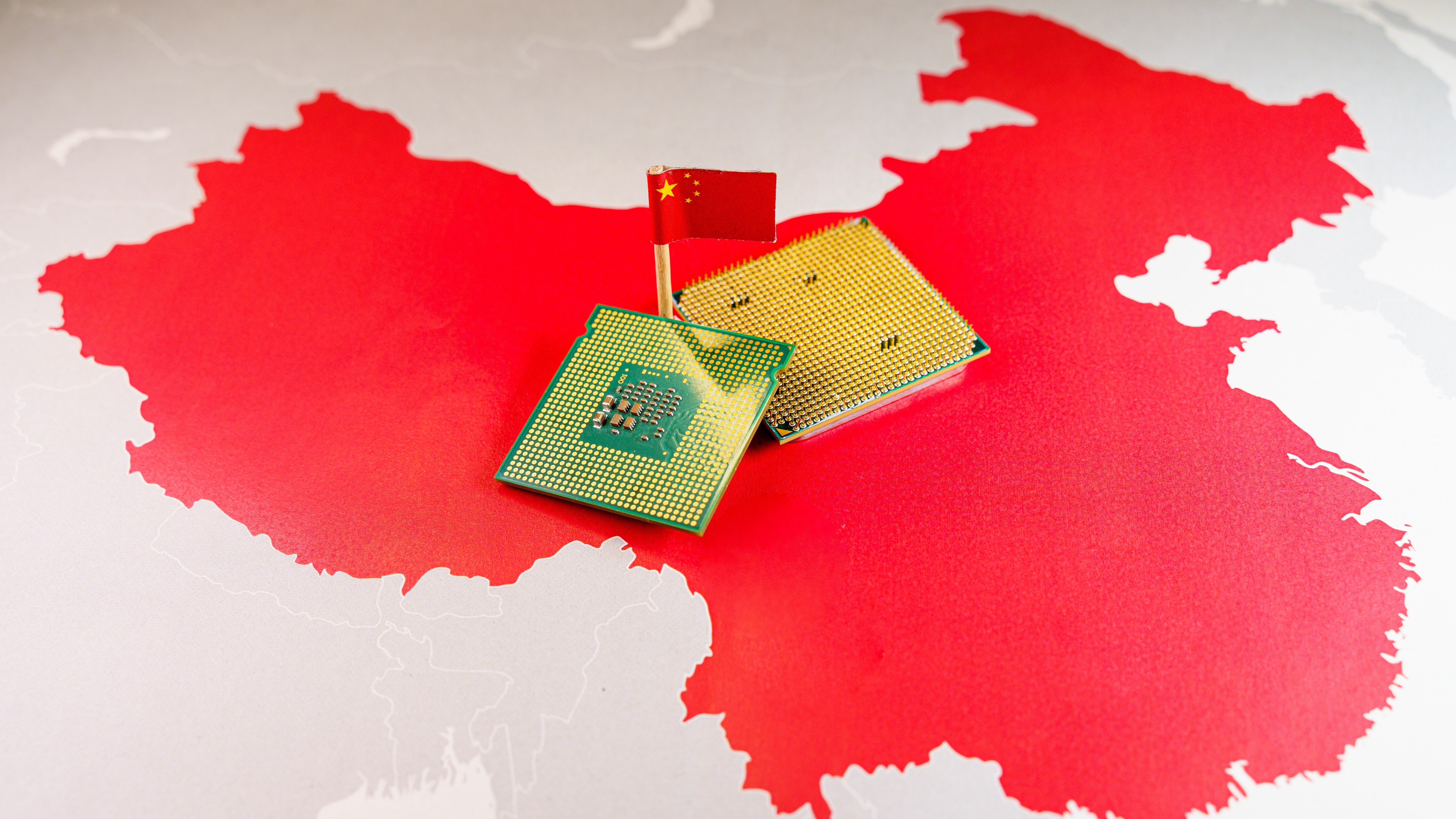China blocks Intel and AMD CPUs for government offices and servers, plans to switch to domestic-made alternatives
China would replace AMD and Intel-made CPUS with home-made options from Loongson and Phytium.

China initiated new guidelines that prohibit CPUs made by Intel and AMD for government PCs and servers. Instead, it has approved 18 processors made by Loongson and Phytium make, which the United States blacklists.
This is part of China's nationwide strategy to rely more on its homegrown options as a response to US sanctions, which have blocked many items from China. The Chinese Finance Ministry and the Ministry of Industry and Information Technology released this guidance late last year, on December 26. State-owned companies were also informed to do the same where the transition towards locally made options should be completed by 2027.
China is an important market for many tech companies, not limited to AMD, Nvidia, and Intel. Last year, the country generated 27% of Intel's sales, earning $54 Billion, while AMD enjoyed $23 Billion in sales, according to reporting from the Financial Times. The government also intends to replace Microsoft's operating system with its domestic alternatives, which provides 1.5% of its revenues.
China may have a rough time delivering competitive chips at the scale necessary, despite buying many chipmaking tools in recent months. Intel CEO Pat Gelsinger said that despite China's progress in the chipmaking industry, its technology will stay behind by ten years in the foreseeable future. In comparison, chipmaking companies like TSMC, Intel and other companies have new fabrication plants built or being build in the US with a major contribution from the Biden-led US government. Interestingly, Intel has an export license with Huawei, which AMD tried to get it revoked unsuccessfully.
China's Challenges to Rely on Self-Made CPUs
This would be a challenge as China would have to spend billions in R&D and will need to spend an incalculable amount of time to be self-sustainable. Even with the stolen technology they can reverse engineer, Fabrication plants rely on other factors. Chinese companies like SMIC and HLMC rely on other companies for raw materials and other technology sources from other companies in respective countries like any other semiconductor makers. China's Zhaoxin KX-7000 CPU is considered to be six years behind, but it relies on x86 architecture.
It is also unlikely China will be able to make a complete transition to the extent that its citizens will be switching to home-grown CPUs, yet. On the other hand, Russia also has sanctions imposed by the US and the EU, resulting in many services and imports being stopped. While Russia imports computing hardware from China, it is uncertain if the country would import and use Chinese-made CPUs.
Get Tom's Hardware's best news and in-depth reviews, straight to your inbox.

Roshan Ashraf Shaikh has been in the Indian PC hardware community since the early 2000s and has been building PCs, contributing to many Indian tech forums, & blogs. He operated Hardware BBQ for 11 years and wrote news for eTeknix & TweakTown before joining Tom's Hardware team. Besides tech, he is interested in fighting games, movies, anime, and mechanical watches.
-
slightnitpick ReplyChina may have a rough time delivering competitive chips at the scale necessary
Fortunately for China you don't need "competitive chips" for office and most server work. Especially if you homebrew a more efficient OS than MS Windows. -
nookoool Replyslightnitpick said:Fortunately for China you don't need "competitive chips" for office and most server work. Especially if you homebrew a more efficient OS than MS Windows.
I have to agree. I am still using a i7-6xxx at 14nm running linux with 32 gig of ram. This year of Chinese desktop cpu exceed that in performance. Not exactly competitive in pricing for consumer market, but should be fine for general office and government environments.
If they are having yield issues at 7nm, no reason they can't stay at 12-14nm... -
usertests Reply
Something around the equivalent of a Sandy Bridge quad-core with an iGPU and modern video decode/encode is probably sufficient for most home and office use cases. And they are definitely exceeding that by this point:nookoool said:I have to agree. I am still using a i7-6xxx at 14nm running linux with 32 gig of ram. This year of Chinese desktop cpu exceed that in performance. Not exactly competitive in pricing for consumer market, but should be fine for general office and government environments.
If they are having yield issues at 7nm, no reason they can't stay at 12-14nm...
https://www.tomshardware.com/pc-components/cpus/chinas-loongson-cpu-seems-to-have-ipc-equivalent-to-zen-4-and-raptor-lake-but-slow-speeds-and-limited-core-count-keeps-3a6000-well-behind-modern-competition
https://www.tomshardware.com/pc-components/cpus/chinese-chipmaker-with-x86-license-releases-surprisingly-modern-new-chips-made-with-a-mystery-process-node-xhaoxin-kx-7000-cpu-launches-with-eight-cores-37ghz-clocks-pcie-40-and-ddr5-memory-support
The clock speeds will be lower, but they can be compared to the latest 35W Intel/AMD chips (likely with worse efficiency though). -
CmdrShepard Smart move.Reply
You can't rely on western tech not spying on you, selling your data to 3rd parties, or failing that just leaving the barn door wide open for data to escape.
At least with your own stuff you are helping your own industry instead of competitors'. -
Steve Nord_ Reply
Salty, but acceptable. We have 220 core ARM at home.CmdrShepard said:Smart move.
You can't rely on western tech not spying on you, selling your data to 3rd parties, or failing that just leaving the barn door wide open for data to escape.
At least with your own stuff you are helping your own industry instead of competitors'. -
slightnitpick Reply
22 nm i7-3xxxM for me and most everything works fine too.nookoool said:I have to agree. I am still using a i7-6xxx at 14nm running linux with 32 gig of ram. This year of Chinese desktop cpu exceed that in performance. Not exactly competitive in pricing for consumer market, but should be fine for general office and government environments.
If they are having yield issues at 7nm, no reason they can't stay at 12-14nm...
The only thing I can't get to run right is some machine learning stuff because I don't know how to use the dgl.use_libxsmm(False) API call in a Python ML program I downloaded from github. Libxsmm requires AVX2 and needs to be disabled in DGL when DGL is called or it errors out. -
mitch074 I love how they managed to slip a "stolen technology" dig in the article - LoongArch is specific to the LoongSong company, and Phytium is quite there with Arm-based (UK licensed) designs while still pushing RISC-V (open source). So, what "stolen technology"? More stuff stolen than Microsoft's and Apple razzia on Xerox' IP ? Or on Intel and AMD heavily inspiring themselves from the now defunct Alpha processors ?Reply
And while both companies are far from threatening x86's share on the global Chinese market, the fact that all government offices will switch to it (because they have completed the switch to Linux-based OS) will mean that many private companies contracted by the government will also convert at least in part...
In a country like China, it means that it will soon be a force to be reckoned with. And, like said in the article, that's a quarter of the world's market in semiconductor that's threatening the x86-64 monopoly. Worrying for Intel, less so for AMD. -
slightnitpick Reply
That "dig" is literally a link to an article referencing both accusations, and proven theft. Though that linked article also states that the more recent "thefts" are more likely just poaching of employees, and not theft per se.mitch074 said:I love how they managed to slip a "stolen technology" dig in the article - LoongArch is specific to the LoongSong company, and Phytium is quite there with Arm-based (UK licensed) designs while still pushing RISC-V (open source). So, what "stolen technology"?
Apple licensed the design from Xerox. Microsoft copied UI design. Nothing stolen here, just a couple of employees head hunted.mitch074 said:More stuff stolen than Microsoft's and Apple razzia on Xerox' IP ?
Can you expand on this point? From what I'm reading DEC was bought out and sold piecemeal to AMD and Intel. That's literally the opposite of theft.mitch074 said:Or on Intel and AMD heavily inspiring themselves from the now defunct Alpha processors ?
One of these Chinese companies is x86-64. We'll see. It's not as if Intel can't pivot to another architecture if it absolutely has to. China's a bit over 1/6th of the world population, is fairly wealthy on an per capita basis (though there are plenty of Chinese who cannot afford a computer more expensive than a cheap smart phone, if that.), but I doubt India is going to be happy importing many Chinese processors. So yeah hopefully we can look forward to a multi-polar chip industry again, like we used to have in the 80s/90s.mitch074 said:And, like said in the article, that's a quarter of the world's market in semiconductor that's threatening the x86-64 monopoly.